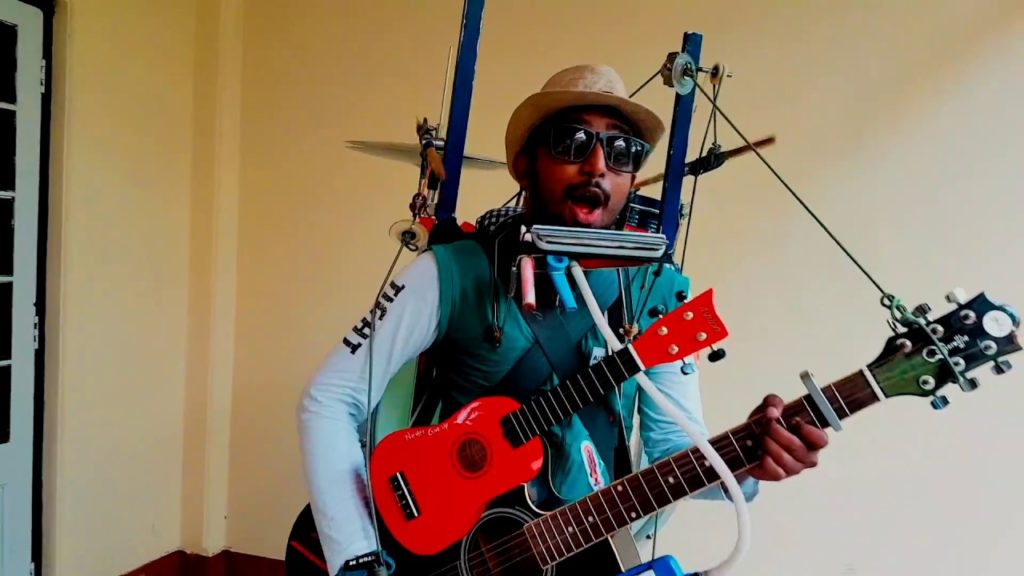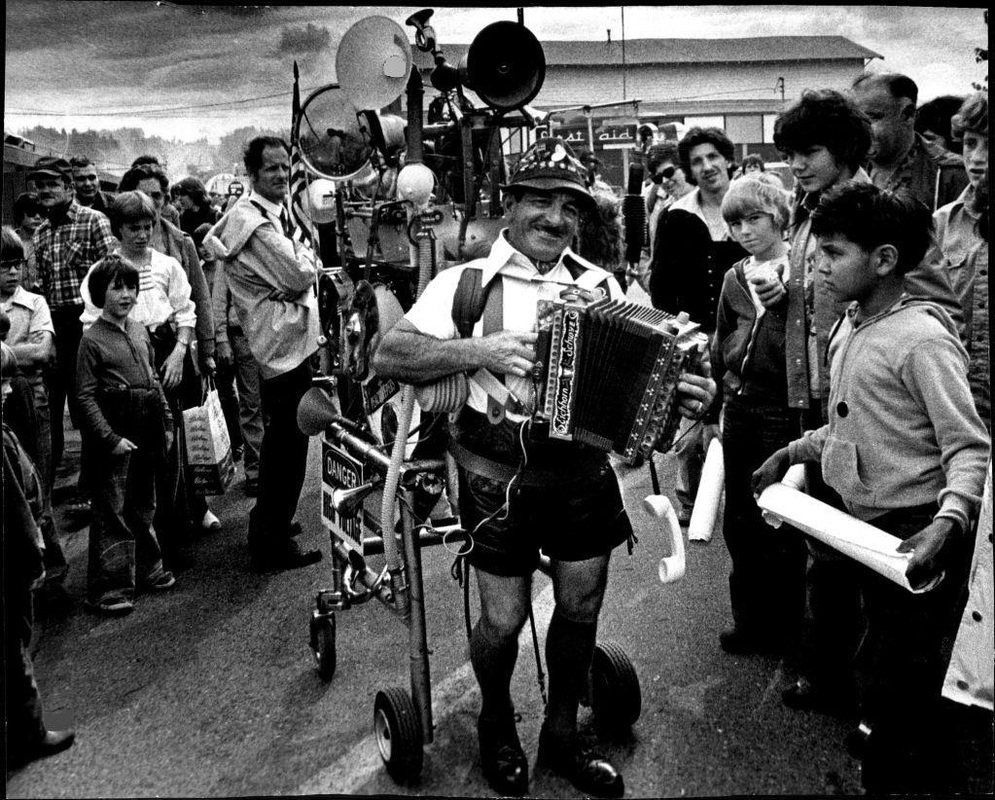

Subsequent versions of this "piatar" also had bass guitar and banjo necks and a snare drum which are played by foot-operated hammers.

Joe Barrick, who was born in Oklahoma in 1922, wanted a way of accompanying himself on fiddle, so he built a contraption with a guitar neck on a board with footpedals to operate the notes. Fate Norris, of the Skillet Lickers, a hillbilly string band of the 1920s and early 1930s developed a geared mechanical contraption with footpedals that enabled him to play guitar, bells, bass fiddle, fiddle, autoharp and mouth harp. In "one-man-band" shows, Fuller would use his "footdella", a footpedal-operated "sock" (hi-hat cymbal), a homemade neck harness (for a harmonica, kazoo and microphone), and a 12-string guitar. Fuller developed a foot-operated bass instrument which he called the " footdella", which had six bass strings which were struck by hammers.

One of the earliest modern exponents of multiple instruments was Jesse Fuller.

Blues singers such as "Daddy Stovepipe" (Johnny Watson) would sing, play guitar, and stomp their feet for rhythm, or used a foot pedal to play bass drum or cymbal. In the 1940s, entertainer and clown Benny Dougal used a crude "stump fiddle" (a single string stretched on a stick) with a footpedal-operated pair of cymbals. Guitarist Jim Garner played guitar with his hands and triangle with his feet, and Will Blankenship of the Blankenship family of North Carolina played harmonica, autoharp and triangle in shows during the 1930s. Henry Mayhew's history of London street life in the 1840s and 1850s described a blind street performer who played bells, the violin and accordions. An 1820s watercolour painting shows a one-man band with a rhythm-making stick, panpipes around his neck and a bass drum and tambourine beside him. An Elizabethan-era woodcut shows a clown playing the pipe and tabor. This type of playing can still be heard in parts of rural France, in England and Spain. The pipe was a simple three-holed flute that could be played with one hand the tabor is more commonly known today as a snare drum. The earliest known records of multiple musical instruments being played at the same time date from the 13th century, and were the pipe and tabor. Pipe and taborers, from the 13th-century illuminated manuscript, Cantigas de Santa Maria In the 2000s and 2010s, the availability of affordable digital looping pedals has enabled singer-musicians to record a riff or chord progression and then solo or sing over it. Since the development of Musical Instrument Digital Interface ( MIDI) in the 1980s, musicians have also incorporated chest-mounted MIDI drum pads, foot-mounted electronic drum triggers, and electronic pedal keyboards into their set-ups. More complicated setups may include wind instruments strapped around the neck, a large bass drum mounted on the musician's back with a beater which is connected to a foot pedal, cymbals strapped between the knees or triggered by a pedal mechanism, tambourines and maracas tied to the limbs, and a stringed instrument strapped over the shoulders (e.g., a banjo, ukulele or guitar). This approach is often taken by buskers and folk music singer-guitarists. The simplest type of "one-man band" is a singer accompanying themselves on acoustic guitar and playing a harmonica mounted in a metal "harp rack" below the mouth. One-man bands also often sing while they perform. Jeff Masin, a one-man band in New York CityĪ one-man band is a musician who plays a number of instruments simultaneously using their hands, feet, limbs, and various mechanical or electronic contraptions.


 0 kommentar(er)
0 kommentar(er)
